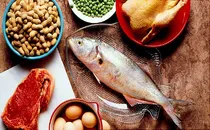New year, new you, right? If you are one of the millions who made getting in shape a New Year’s resolution for 2019, that’s awesome… do it to it! Most people who physically train themselves are usually trying to do one of two things. Lose weight or put on size. It doesn’t matter if you are male or female, young or old.
In order to reach your individual goals, it helps to have a guideline or reference point so you can make the appropriate adjustments as you progress. This is that guideline.

The first thing you have to do is to determine your base caloric level. Enter your exact amount of daily calorie on any of the free websites for 5-7 days (I personally use “FitnessPal” https://www.myfitnesspal.com). Then average that out and subtract 200-400 calories. That will be your base.
To Add Mass
- Consume 1.5 grams of protein per pound of body weight, unless you are over 20% body fat. If you are, lose weight first.

- Complex carbs and essential fats make up the rest of your diet. If you are an ectomorph, mesomorph, or teenager-mid 20’s, you can have 40% more carbs. Otherwise, stay around 25-30%
- Essential fatty acids are necessary. Some experts recommend 5-8 grams of fish oil a day.

- You will need to eat at least 200-400 extra calories a day, depending on how long you have been training
To Lose Body Fat
- For most people, your carb intake is a determining factor in your fat loss. Carbs should not make up more than 20% of your daily intake.

- Fat loss does not happen quickly, it takes time. Never attempt to lose more than 2 lbs, a week. 1.5 lbs. is a better goal for a 200 lb man.
- The most fat loss will occur when first starting the diet, it won’t be steady.
- Do not diet for more than 16 weeks.
- Diet types for most people should work around the principle of restricting or omitting carbs completely for long periods during the day.
- Teenagers should not undertake any kind of drastic diet, or keto diets unless they are very obese and insulin-resistant. Most teens can decrease their carbs by 20% and increase cardio to achieve body fat loss.
_original.jpg)
These numbers will not work for everyone. Everyone’s body responds differently to training and nutrition because there are many other factors to consider.
Again, these principles represent a guideline to start with. Follow your program, and chart everything down. Make adjustments as necessary and stay focused on your goals. You will achieve them.

